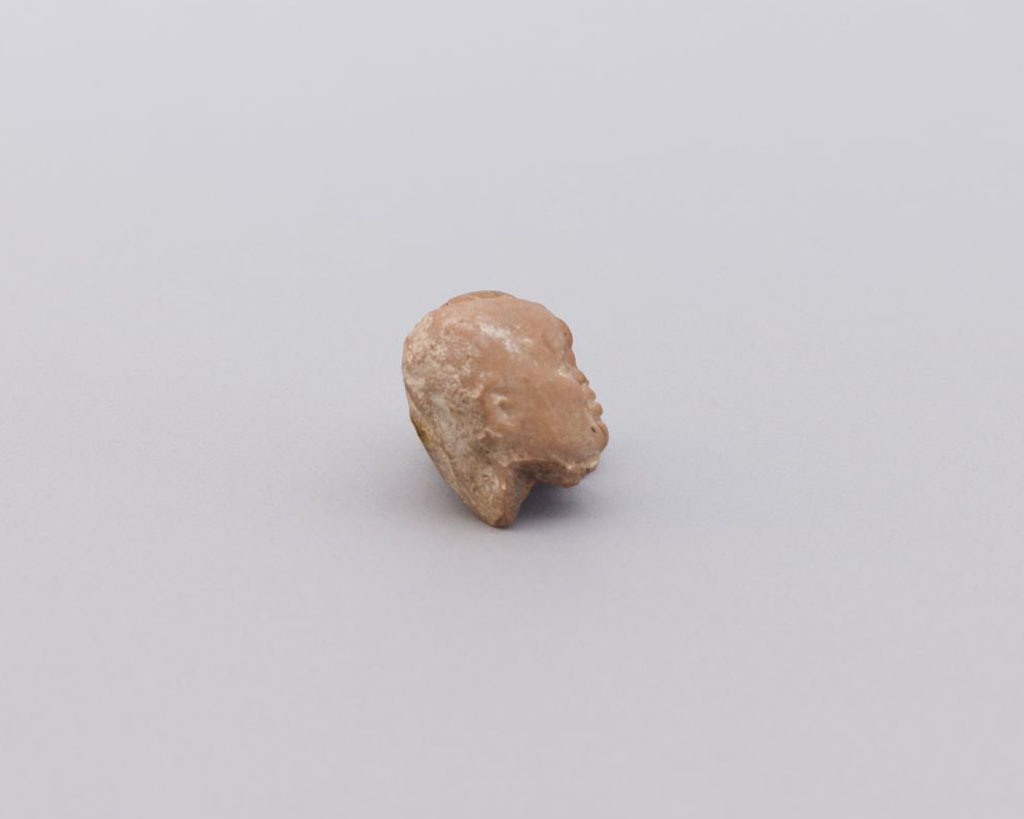This small terracotta fragment represents two heads joined together, one male and one female. The break under the chins reveals that the statuette to which it belonged was hollow. The faces are round and with exaggerated features, including fleshy lips and bulbous noses. The female head has short, chin-length hair, bangs, and a filet. The male has a shaved or bald head and lacks facial hair. The backs of the heads are relatively flat and undecorated; however, there are traces of white pigment, such as seen on other Hellenistic terracottas. This example was most likely made using a two-part mold. The two heads lack the oversized ears or open mouth of typical theatrical representation, but the rounded faces and bulbous noses are consistent with some comic figures (particularly seen in images such as the stock character of the old nurse) as well as in depictions of children.
This terracotta, along with many others in the Menil Collection, was once in the collection of Dr. Daniel Fouquet (1850–1914). In the catalogue of his collection, this piece is identified as a pair of Egyptian children. Other examples that were in the Fouquet collection were more clearly Egyptian children as evidenced by the inclusion of a side lock, a characteristic ancient Egyptian hairstyle for children that paired a shaved head and one small lock of hair. Close examination of this piece shows a slight bulge above the left ear of the male head, suggesting a side lock is present, although poorly defined.
The catalogue from Dr. Fouquet’s collection indicates this fragment’s find spot as Sâ al Hajar, also known as Sais. This city in the Nile Delta was the capital of the 5th nome district, an administrative province like a state or county, in Lower Egypt, and during the Late Period (525–323 BCE) it was the capital of Egypt as a whole.







